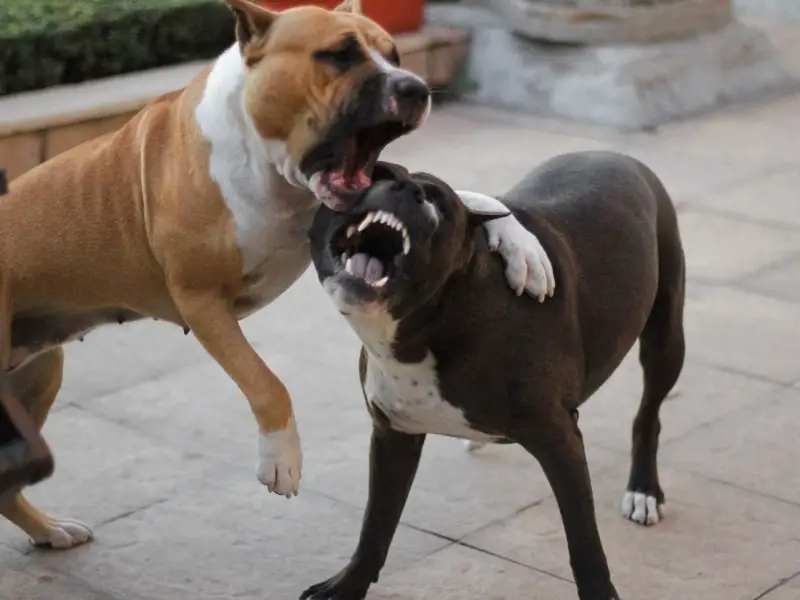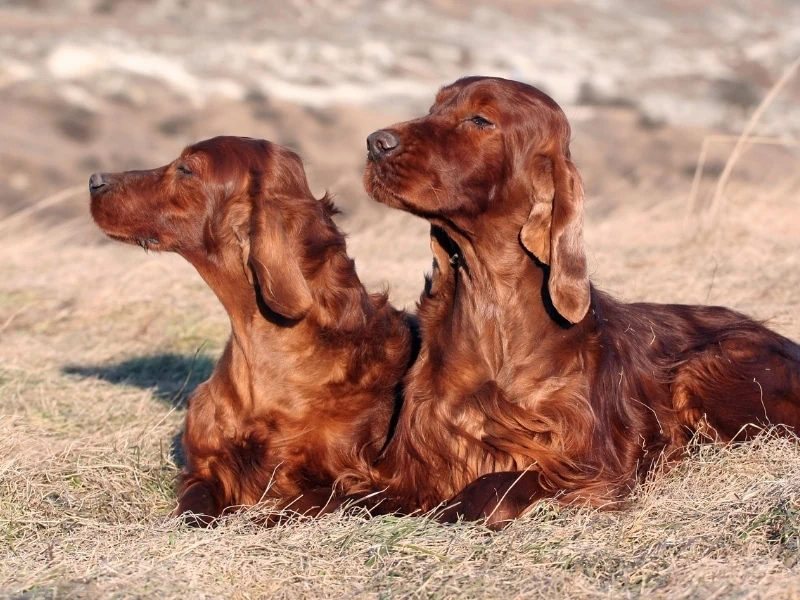A Dog’s Perception through Smell
First and foremost, your dog does have a keen sense of smell. They need to because it’s how they “see” the world. We, humans, see the world using our eyes, while dogs see the world using their nose.
When an adolescent or older dog meets a puppy, it may not go as you had planned. We humans have a bad habit of attributing human thinking to our dogs. After all, if we think babies are adorable, shouldn’t your dog think the same about puppies?
Humans are quite unreasonable when it comes to our pet’s behavior. When you bring home a puppy, your adult dog will need sniffing time. Sniffing is how they will gather necessary information regarding the new member and determine where they are in the pecking order.
During the informational gathering session, the puppy will likely roll over and expose their belly. This is a submissive behavior communicating to the older dog, “I am not a threat.” Another behavior your puppy may exhibit during sniffing is peeing.
A dog’s urine contains all the information another dog needs to determine their age, gender, mood, and health. When a puppy pees, the older dog will know their age by the presence and level of sex hormones such as testosterone and pheromones.
Hormone levels in preadolescent puppies are low. For instance, male dogs have low testosterone levels until they reach sexual maturity, around six months of age. At this point, they are adolescents, and their testosterone level will be even higher than an adult (source).
Sight and Size

Dogs can discriminate that another dog is a dog using visual and acoustic cues. Using their eyes and ears, they can determine not only that they are looking at another dog but what size and age that dog is. Although this was not applied directly to how they recognize puppies, it is reasonable to assume visual cues play a part.
The study of our canine companions’ cognitive abilities is a growing science and, in recent years, is receiving more attention in the research community.
Researchers at the University of Sussex were interested in whether dogs use visual and acoustic cues to assess another dog’s size. This ability was thought to belong exclusively to primates.
In a study conducted at the University of Sussex by researchers Dr. Anna Taylor, Dr. David Reby, and Karen McComb, known as the Taylor experiment, 40 dogs were presented with a small stuffed Jack Russell and a large stuffed German Shepherd (source).
As each dog was presented with the stuffed dogs, a recording of growls was played. Each recording represented growls of a large dog and growls of a small dog.
They assessed the participating dogs according to which stuffed dog they looked at first, then how long they looked at each. The dogs were observed to spend more time looking at the dog that matched the recording. This is known as preferential looking.
The researchers concluded that domestic dogs are cognitively able to take visual cues and match them to auditory cues. They were able to match the size to the sound.
In another study conducted by Peter Pongracz of the Eotvos Lorand University in Budapest, Hungry Pongracz also concluded that dogs determine another dog’s size through growls.
The study was similar to the Taylor experiment but projected two pictures of the same dog. In one picture, the dog was normal-sized, and, in the other picture, the dog was considerably smaller by 30%. The pictures were coupled with growls when shown to the study participants.
The results were identical and proved that dogs have cognitive abilities previously thought to only exist in primates.

Let’s face it, your dog, whether younger or older, will not immediately love the new puppy. If you have an older dog, they most likely will tolerate the new addition up to a point, with a senior dog being the least tolerant.
The older dog of the house has set routines. They also have personal belongings, such as favorite toys, a bed, and their personal human. Dogs, like small children, do not want to share, especially their best friend.
If the new puppy is joining an established multi-dog household, the same will hold true. The other dogs have a routine and do not want to be disturbed by an obnoxious yet exuberant youth with no manners or understanding of acceptable social behavior and communication skills.
Puppies are full of energy and always looking for a playmate. Before they left home, they had their littermates at their exclusive beck and call. Therefore, they expect the other dog to fulfill the same role (source).
The older dog or dogs in the pack will teach the puppy the rules of social convention. We must expect the other dogs, especially the alpha — under you, of course — will take the puppy in hand. When your adult dog growls or grumbles at the puppy, they are doing nothing more than teaching them how to behave properly.
When your dog is reprimanding the puppy, do not reprimand them. They should be allowed to interact in this way, as it is the fastest and best way for your puppy to learn appropriate social behavior.
It’s not easy to deal with a whirlwind of activity, especially the older your other dog is. When a new puppy joins the pack, always provide supervision. An older dog may unintentionally hurt a small puppy.
Does a father dog know his puppies?
Here’s the short answer first though: Does a father dog know his puppies? It’s unlikely that a male father dog would recognize his puppies by scent or familiarity. Most dog dads don’t even get to meet the puppies at birth, and so don’t have the paternal bond that a dog mother might have maternally.
Do dogs recognize their siblings, and other questions about canine emotional intelligence
It can be said that dogs often act differently around babies, and they seem to treat them with extra care to make sure that they don’t get hurt. … Dogs can tell a difference, but they probably don’t know just what a baby is.